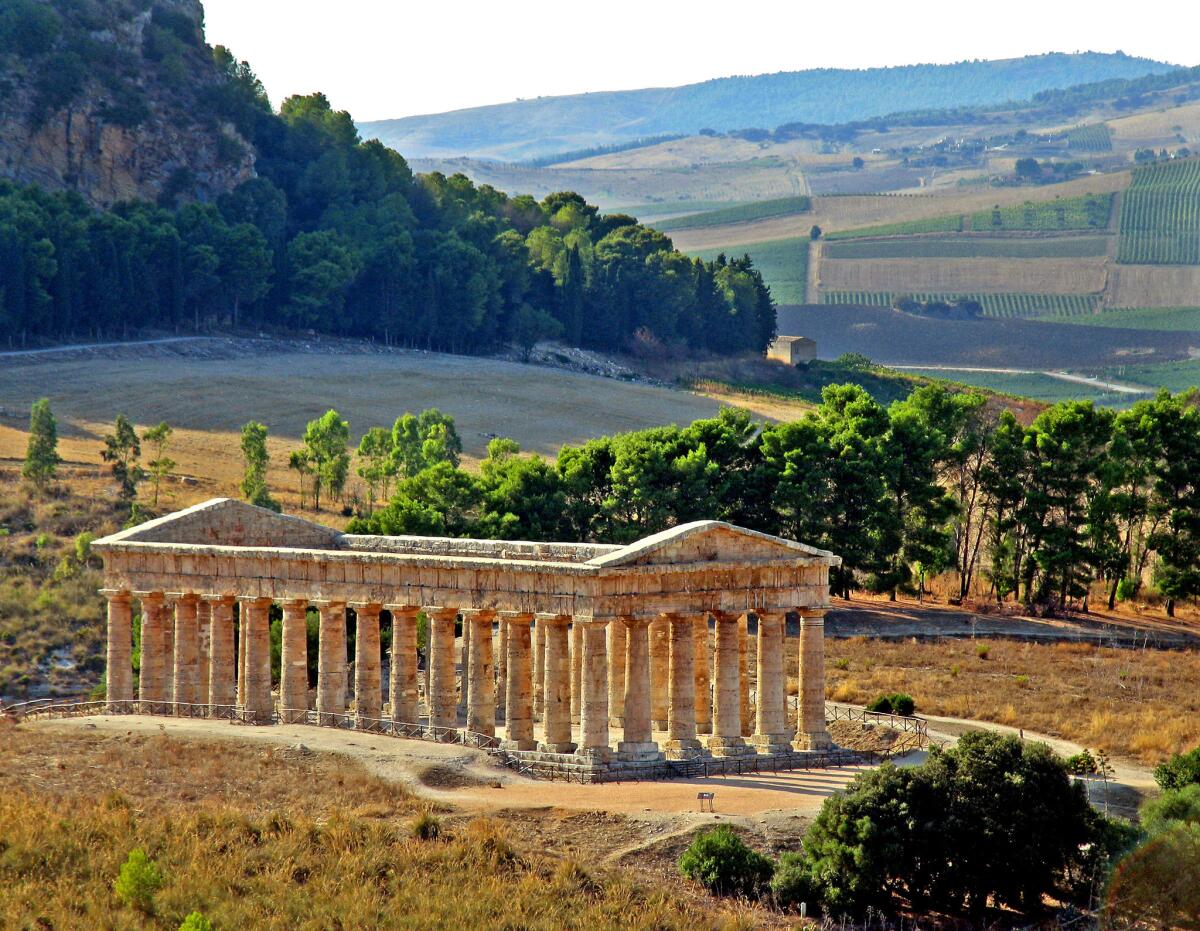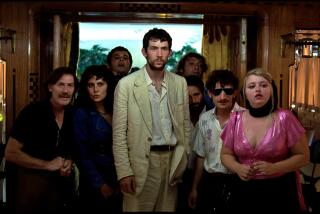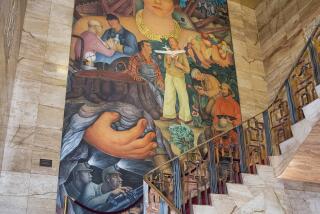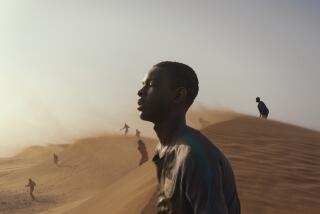Western Sicily, where centuries and cultures converge

A cracked concrete road spirals up to a lookout over Salemi in western Sicily, passing flimsy-looking apartment houses, weed-choked fields, rubble-strewn construction sites and a dilapidated villa with a sign that says it’s an insane asylum.
All along the way are views over the old hill town, with its echoing alleyways and stairs, ruined Baroque churches and roofless palazzos abandoned after the 1968 Belice Valley earthquake, a 6.0-magnitude shaker that killed 300 people and left 70,000 people homeless.
The historic center had been inhabited since Roman times, but the destruction was so massive that many people simply cut their losses and moved away, building an unlovely sprawl of new neighborhoods around the old town. Beyond are the sun-blasted fields and bare hills of western Sicily that bankrupted land owners, turned peasant farmers into slaves and inspired mass emigration.
It is a dolorous landscape, “never petty, never ordinary, never relaxed, as a country made for rational beings to live in should be,” Giuseppe Tomasi di Lampedusa wrote in “The Leopard,” his classic 1958 novel about Sicily.
Standing here in the fall, I scanned the horizon for the fabled Doric temple at Segesta, Marsala’s windmills and the Aphrodite shrine at Erice.
But for the moment all the treasures that had brought me to this singular corner of Europe -- across the narrow strait of Messina from mainland Italy and just 100 miles from the north coast of Africa -- were concealed, like the images I sought in Hidden Pictures puzzles as a child.
To get here, I flew from Rome to Palermo’s Falcone-Borsellino International Airport, rented a car and headed along the island’s wild western coast, an Italian version of Baja outside the window. Near Trapani, I turned and drove about 30 miles east to Segesta and its Elymian temple, first and foremost among western Sicily’s treasures. It stands out from the highway, with no tourist squalor to distract from its solitary splendor.
But who were the Elymians? Everyone who visits Segesta must ask this question.
Greek sources and some archaeological evidence suggest they arrived on the west coast of Sicily from Asia Minor around 1300 BC, which tends to support legends identifying the first Elymians as the band of refugees from the Fall of Troy whose adventures were told in Virgil’s “Aeneid.” I believe the legend because the people who built the extraordinary temple at Segesta had to be heroes.
I arrived in the late afternoon, just in time to catch the last van up 1,200-foot Mt. Barbaro to a beautiful amphitheater, gouged out from the summit. By the time it was built in the 2nd century BC, Segesta was a part of the Roman Empire, but the architecture is classic Greek. In the summer, plays by ancient masters such as Aristophanes are produced here, though the only Greek chorus performing when I visited was composed of noisy cicadas.
Afterward, I climbed a long flight of rustic steps leading to the temple, bordered by thickets of Sicilian agave so big and tree-like that people carve their initials in the leaves. The Elymian language has not yet been deciphered so the gods worshiped at Segesta remain a mystery, though it’s thought that the temple was built in the 5th century BC.
It is roofless but otherwise amazingly intact, with a cornice supported by 26 massive columns. The capitals are sterling examples of the simple, magisterial Doric architectural style brought to Sicily by Greeks who pushed westward to plant colonies all around the Mediterranean basin. A band of Greek pioneers settled on the southwest coast of Sicily at Selinunte and waged war on Segesta, forcing the Elymians to seek the support of powerful Carthage on the north coast of Africa.
“Trust no one” could be the moral of this story. Carthage ultimately dominated Segesta, replacing its unknown deities with hungry gods and bringing human sacrifice to the island to appease them.
Excavation, exploration
When the news broke early last year about the sale of earthquake-damaged homes in the historic center of Salemi for 1 euro each, it sounded like the Italian version of a Hawaiian time-share scam. But I had to check it out, so I booked a room at the Hotel Villa Mokarta in Salemi, an easy drive to the sites.
Under this scheme, prospective buyers guarantee they will restore the properties in two years according to official specifications. Soon rumors swirled about international notables who had decided to take up the offer.
Stalled by legal complications, the 1 euro sell-off of historic homes in Salemi’s old town has yet to materialize. And even if it does, I’m not tempted because the properties are mostly empty shells, without roofs and walls.
But parts of old Salemi don’t need gimmicks to beguile: the Arabic castello on the Piazza Alicia; a collection of tender Sicilian Madonnas in the town’s 18th century Jesuit College, salvaged from churches destroyed in the 1968 quake; a small museum devoted to the intricately decorated loaves of bread baked every March to celebrate the Feast of San Giuseppe; and the ruined ethnic quarters of Salemi, the only town that offered safe harbor to Muslims and Jews after their expulsion from the island in 1492.
No one could complain that Salemi is too touristy. The historic center has a couple of cafes, one enoteca (wine bar) and a single street of shops. The only hotel is the Villa Mokarta in a soulless modern shoebox outside the old town. Nevertheless, it is clean, comfortable and friendly with a restaurant that serves tasty pasta.
Food is one of Sicily’s glories, so when an English real estate agent told me about a restaurant in the countryside north of Salemi, I booked a table for lunch.
Al Ciliegie, supported by a local Catholic charity on property repossessed from the Mafia, turned out to be everything I hoped for. It’s on the lower level of a farmhouse surrounded by vineyards, and it has just six tables and a dumbwaiter that brings traditional fare such as stuffed veal rolls and grilled pork from the kitchen upstairs. Manager Lucie Bongiorno described the menu, but once she mentioned the award-winning house specialty busiati al sugo, I didn’t need to deliberate. Busiati are tender twists of pasta, handmade at Al Ciliegie, served in a sauce of eggplant, mushrooms and tomatoes. This meal was followed by homemade pistachio ice cream.
Afterward, I went touring. It’s an easy 45-minute drive south from Salemi to Greek Selinunte, founded in the 7th century BC. The colony prospered for a time, but was destroyed and abandoned during Rome’s wars with Carthage around 250 BC. The archaeological park is among the largest in Europe, covering 650 acres magnificently sited on a curve of coast where two now dry rivers once emptied into the sea.
A complex of temples -- all Doric, like at Segesta -- is close to the entrance. About a half-mile beyond, reached by a fleet of electric shuttles, the ancient acropolis looms on a walled plateau, with a small museum in a 16th century Spanish watchtower.
I admired some of the gable friezes, or metopes, that once decorated Selinunte’s temples and pondered the inevitable rise and fall of civilizations. On another day I headed west to see the remains of a Carthaginian warship, discovered in 1969 in the harbor of Marsala, and visit the island of Mozia in a lagoon north of town.
A small tourist launch took me across the lagoon to Mozia, a rare Carthaginian archaeological site owned and excavated in the early 20th century by Englishman Joseph Whitaker. The museum is lined with his old, hand-labeled, wooden cases displaying finds including the exquisite statue of a Greek youth in a diaphanous robe, dating from the 5th century BC. It was unearthed in 1979 to the jubilation of archaeologists who have yet to explain how it got to Mozia.
As I crisscrossed the region, the landscape of southwestern Sicily got under my skin. On deforested hills, windmills catch the North African sirocco and dead riverbeds mourn the loss of water that now irrigates endless vineyards. The province of Trapani produces more grapes than does Argentina, and most are sent to northern Italy to be mixed with other varietals.
Just south of Salemi I found the forlorn town of Gibellina, built in the 1980s and decorated with a bizarre, rusting collection of statues and mosaics from a best forgotten period in Italian art. Road signs led me on to old Gibellina in the valley of the Belice River, near the earthquake’s epicenter. It was not the worst disaster in Italy’s history, but it was one of the most avoidable.
Five years before the tremors began, social activist Danilo Dolci had begun agitating for the construction of dams along the rivers of western Sicily, a risky proposition because water was controlled by the Mafia. Several towns along the Belice River that might have been saved by dams were demolished by the quake in 1968. If you drive along the Highway 119, you can see their graveyards.
People have different ways of grieving. Old Gibellina was covered in a wave of white cement by Italian conceptual artist Alberto Burri. Nearby Poggioreale was left in ruins, Salemi still struggles to make something out of the debris.
All are treasures, but it takes looking through the landscape to find them.
More to Read
Sign up for The Wild
We’ll help you find the best places to hike, bike and run, as well as the perfect silent spots for meditation and yoga.
You may occasionally receive promotional content from the Los Angeles Times.






